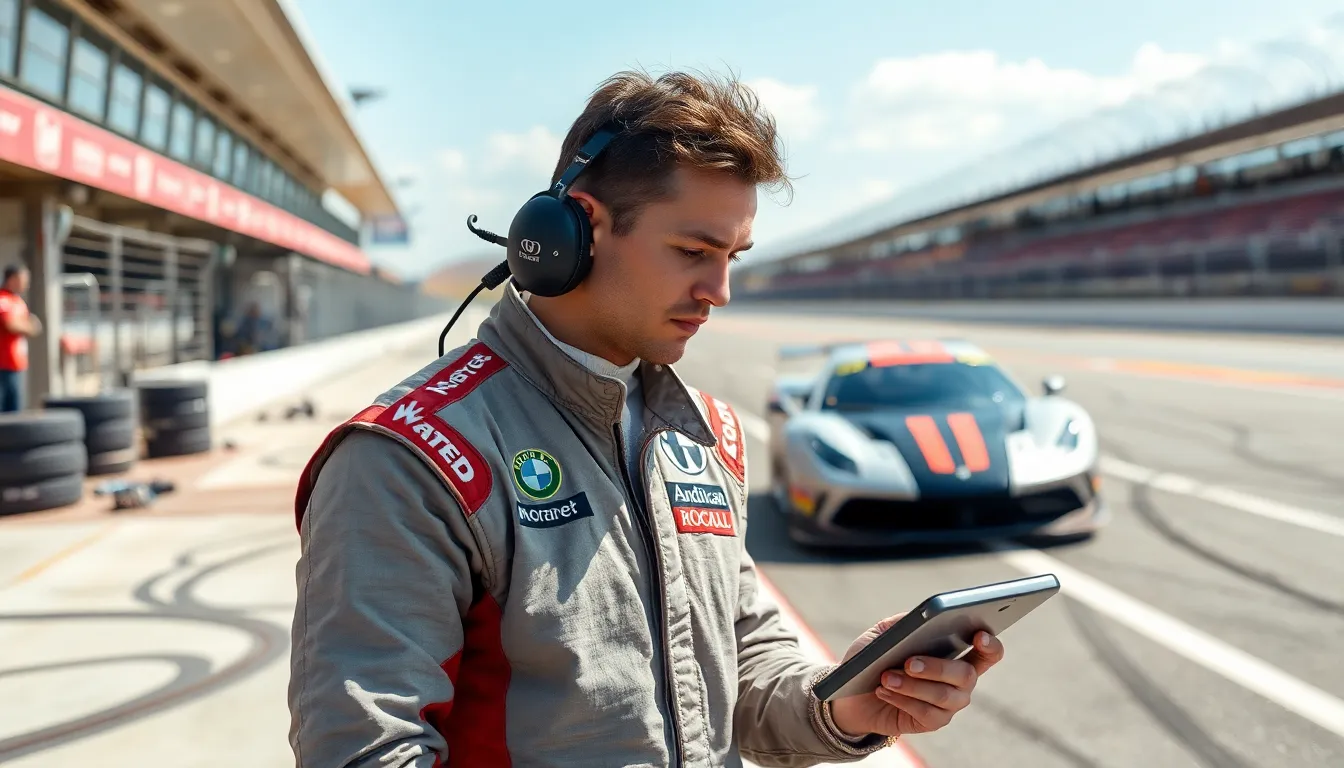In the fast-paced world of racing, every millisecond counts. Enter lap delta tracking, the secret sauce that helps drivers shave precious seconds off their times. It’s like having a personal coach whispering sweet nothings about performance improvements while you’re tearing around the track. Who wouldn’t want that?
Table of Contents
ToggleOverview of Lap Delta Tracking
Lap delta tracking serves as a vital tool in the world of racing. This technology calculates the difference in lap times, allowing for precise performance analysis. By comparing current lap times to previous laps, drivers gain insights into their speed and efficiency.
Drivers receive immediate feedback during their race with lap delta tracking systems. This information highlights areas where they can accelerate or decelerate, optimizing their racing strategy. Real-time data enables quick adjustments that can lead to improved lap times.
Understanding the lap delta can involve analyzing various factors such as track conditions and tire performance. Each element influences overall race performance, making it essential to monitor these variables meticulously. Advanced analytics also assist racers in evaluating the impact of their driving style on lap times.
Competitors utilize lap delta tracking not only to refine their skills but also to strategize against others on the track. Teams can assess if their drivers maintain a steady pace or if they’re losing time in specific sectors. With this data, teams can implement targeted adjustments to enhance their chances of success.
Incorporating lap delta tracking into training programs fosters continuous improvement. This technology drives competitive advantages, ensuring that racers remain at the forefront of their sport. Utilizing these insights creates opportunities for personal bests and potential wins.
Importance of Lap Delta Tracking

Lap delta tracking is essential in racing for optimizing driver performance and improving lap times. By providing precise feedback on laps, this technology empowers drivers to refine their techniques and strategies effectively.
Enhancing Performance Analysis
Data from lap delta tracking allows thorough performance analysis. Drivers can compare current laps against previous ones, revealing insights into speed and efficiency. This helps identify specific areas for improvement, such as braking and acceleration points. Armed with these insights, teams can make data-driven decisions aimed at enhancing overall racing strategies. Analyzing differences in lap times based on environmental factors leads to a comprehensive understanding of each race scenario, guiding both in-car adjustments and team tactics.
Real-Time Feedback Benefits
Immediate feedback from lap delta tracking enhances decision-making during races. Drivers receive crucial data on their performance while on the track, allowing for instant adjustments. Quick reactions to lap time changes can significantly impact overall performance and race outcomes. Teams gain valuable insights from real-time metrics, helping them strategize more effectively against competitors. The technology fosters a culture of continuous improvement, positioning drivers to capitalize on their strengths and address weaknesses during practice and race conditions.
How Lap Delta Tracking Works
Lap delta tracking operates through advanced technologies that systematically monitor driver performance. By collecting precise data, it allows for real-time analysis that enhances racing strategies.
Data Collection Methods
Multiple data collection methods exist within lap delta tracking. Sensors embedded in the vehicle capture speed, acceleration, and braking metrics during each lap. GPS technology tracks the car’s position on the track with millimeter precision. Additionally, onboard telemetry systems gather engine performance data to offer a comprehensive view of the vehicle’s capabilities. This data influx enables real-time comparisons against previous laps, highlighting areas for immediate improvement. Teams can identify specific segments of the track where performance deviates, providing actionable insights for drivers.
Analyzing Track Data
Analyzing track data involves sifting through the information gathered during laps. The process utilizes software tools that interpret data in graphical formats, revealing trends and patterns in performance. Drivers and engineers examine this information to pinpoint critical moments that affect lap times. An emphasis on brake points, acceleration zones, and cornering speed reveals how small adjustments can lead to significant time savings. Continuous analysis informs strategic decisions, ensuring drivers maximize their strengths while addressing weaknesses throughout the race. Teams that engage in detailed analysis can make real-time tactical adjustments, enhancing their competitive edge.
Applications of Lap Delta Tracking
Lap delta tracking plays a crucial role in various racing contexts, enhancing performance analysis and informing strategic decisions.
In Professional Racing
In professional racing, lap delta tracking is integral for optimizing driver performance. It provides real-time feedback, helping racers adjust their techniques during events. Analyzing lap times allows teams to identify precise areas for improvement, such as braking points and acceleration zones. By leveraging this data, teams can strategize effectively against competitors, maximizing their chances for success. Drivers often use insights gained from lap delta tracking to pinpoint their strengths and target weaknesses, facilitating continuous growth. Many teams incorporate this technology into race strategies to refine their approach further, ultimately leading to better outcomes on the track.
In Simulated Environments
Simulated environments also benefit from lap delta tracking, providing a platform for drivers to refine their skills. Virtual racing tools utilize this technology to assess performance metrics accurately. Participants gain insights into their lap times, enabling them to adjust tactics before competing in real-world events. Practicing in simulations allows racers to experiment with different driving techniques, improving their understanding of car dynamics. By analyzing lap data, individuals can observe trends and make adjustments that lead to enhanced performance. This application fosters confidence and competence, preparing drivers for the demands of professional racing.
Challenges in Lap Delta Tracking
Lap delta tracking presents several challenges that can impact its effectiveness in racing. Key hurdles include data accuracy issues and implementation costs.
Data Accuracy Issues
Data accuracy remains a significant challenge in lap delta tracking. Inconsistent readings from sensors can lead to misleading lap time comparisons. Variations in environmental conditions, such as temperature and surface changes, affect sensor performance. Real-time feedback becomes unreliable if the collected data lacks precision. Maintaining sensor calibration is crucial for ensuring accurate measurements. Teams must also account for potential data latency, which can distort the immediate understanding of performance metrics.
Implementation Costs
Implementation costs pose a barrier for many racing teams. Upgrading existing technology to support advanced lap delta tracking systems often involves substantial financial investment. High-quality sensors, telemetry systems, and software tools contribute to these expenses. Additional costs arise from ongoing maintenance and necessary training to utilize the technology effectively. Smaller teams may find these costs prohibitive, limiting their ability to compete effectively with larger organizations. Budget constraints may necessitate prioritizing essential upgrades over comprehensive tracking solutions.
Conclusion
Lap delta tracking is revolutionizing the way drivers approach racing. By providing real-time feedback and precise performance analysis, it empowers racers to make informed decisions that can lead to faster lap times and improved overall performance. The ability to identify specific areas for improvement allows teams to refine their strategies and enhance their competitive edge.
Despite the challenges of data accuracy and implementation costs, the benefits of lap delta tracking are undeniable. It fosters a culture of continuous improvement and equips drivers with the insights needed to capitalize on their strengths. As technology evolves, the integration of lap delta tracking will likely become even more essential in both professional and simulated racing environments, paving the way for future advancements in the sport.



